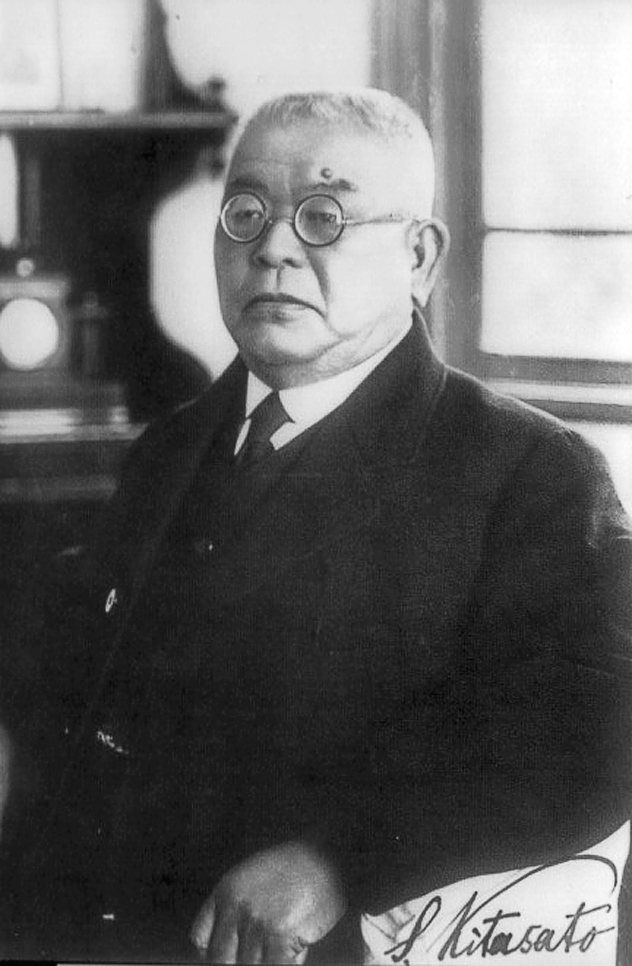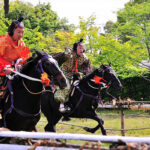

1853 – 1931
北里柴三郎 Shibasaburō Kitasato
Shibasaburō Kitasato on the New ¥1,000 Bill in 2024
Father of Modern Japanese Medicine: Developing Countermeasures Against Infectious Diseases
Among the countries in the world, Japan has a relatively low rate of cashless transactions. Still a cash powerhouse, Japan’s bills are set to undergo a redesign for the first time in 20 years. The new bill is scheduled to be issued on July 3, 2024. The 10,000 yen bill will feature a portrait of Shibusawa Eiichi, the 5,000 yen bill will have Tsuda Umeko, and finally, the 1,000 yen bill will feature a picture of Kitasato Shibasaburō, who will be highlighted in this Samurai edition.
Shibasaburō will replace Hideyo Noguchi, the current design of the 1,000 yen banknote. Before introducing Shibasaburō, let us briefly explain why Hideyo Noguchi was chosen. He was selected because many people recognized him as someone who contributed to the world of medicine by advancing research on a virus (yellow fever) spreading worldwide. However, Hideyo was a student of Shibasaburō. After reading this article, you will discover why Shibasaburō was chosen after his student, Hideyo Noguchi.

Studying in Germany Spurred Him to International Fame
Shibasaburō Kitasato was born on January 29, 1853, in Kitasato, Kumamoto Prefecture, to a family that had served as village headman for generations. When he was a child, he lost his two younger brothers and a sister to cholera at a time when medical care was still underdeveloped. At the age of 18, he was taught by a Dutch military doctor, Mansveldt, at what is now called Kumamoto University and set his sights on a career in medicine. He later entered the University of Tokyo, where he became convinced that “the mission of a doctor is to prevent disease” and decided to study preventive medicine for the rest of his life.
In order to put this aspiration into practice, he went to Germany for six years from 1886 to study under the care of Robert Koch, who won the Nobel Prize in medicine. During his stay in Germany, he succeeded in researching the treatment of tetanus, which made him a world-renowned researcher.
Soon after his return to Japan, he founded a private institute (now national) for research on infectious diseases with the support of Yukichi Fukuzawa, who is on the current 10,000 yen bill, and others. He worked on infectious disease prevention and bacteriology research there. The following year, he established Japan’s first hospital specializing in tuberculosis, where he became the director. He devoted himself to tuberculosis prevention and treatment. Another year later, he went to Hong Kong to investigate the plague that was spreading there and discovered the plague bacillus.
Small Episode of How He Was Seen By Others
Shibasaburō Kitasato loved Yukichi Fukuzawa like a father. Sometime after his first hospital was established, he received an angry letter from Yukichi. He had been regularly sending Yukichi bottles of milk made at the hospital, but the milk bottle delivered that day had a hair on its lid. The letter reminded him to check important things and pay attention to them. Realizing his own fault, he put the letter on his desk in the hospital as a lesson to himself. This incident illustrates the father-son-like relationship between them, with Yukichi providing guidance and care.
In 1914, without consulting Shibasaburō, the Institute of Research on Infectious Diseases was transferred from the Ministry of Home Affairs to the Ministry of Education, leading to his resignation as director. When all the staff of the institute realized this, they also submitted their resignations, causing a stir in the public. It is said that his subordinates wanted to follow him in his enthusiasm for research, which led them to resign as well. This demonstrates how much he was admired by his students and subordinates.
Fostering the Next Generation
Shibasaburō also founded the Kitasato Institute as a medical research institute and was active in educational activities and health administration, such as conducting courses in bacteriology and immunology. Among the many outstanding students taught by the Institute was Hideyo Noguchi, whose name appears on today’s 1,000 yen bill.
In 1917, he founded the Department of Medicine at Keio University to honor Yukichi Fukuzawa, who had passed away. He trained researchers to follow in his footsteps and was involved in the establishment of various medical organizations and hospitals, such as the Japan Medical Association, laying the foundation for modern Japanese medicine.
Shibasaburo Kitasato Overcoming Adversity
Now, the question arises: why was Shibasaburō, who achieved so much, chosen for the banknote later than his student Hideyo Noguchi? After entering the University of Tokyo, Shibasaburō frequently meddled in his professor’s thesis, which caused him to be held back in school for many years. However, his classmate Ogata Masanori encouraged him to study in Germany.
Upon his return from Germany, Shibasaburō found no place in Japan where he could continue his research. The Ministry of Home Affairs had no facilities, and the University of Tokyo, the only institution with medical research facilities, refused to accept him. The medical community, especially the University of Tokyo, accused him of being “ungrateful” because he had previously criticized a paper by Ogata Masanori, who had helped him earlier, on the “discovery of the beriberi fungus,” stating that the fungus had nothing to do with beriberi.
However, with the support of Yukichi Fukuzawa, Shibasaburō established Japan’s first Institute of Infectious Diseases and became its director, allowing him to continue his research in Japan.
Shibasaburo Misses First Nobel Prize as Japan Drags Him Down
When Shibasaburō discovered the plague bacillus, the world praised him highly. However, in Japan, he was not held in the same regard, being labeled as “ungrateful.” Many papers were published criticizing his theory. In 1901, the Nobel Prize was established, and the first Nobel Prize in Physiology or Medicine was awarded to Behring, a student of Koch. Even though Shibasaburō’s tetanus research was superior to Behring’s, Behring’s home country of Germany gave him national support, and it was their passion that won him the prize.
Instead of promoting Shibasaburō’s achievements to the world, Japan hindered his efforts, preventing him from potentially becoming the first Japanese Nobel Prize winner. He was disliked by the University of Tokyo, politicians, the Ministry of Education, and other higher authorities, which is believed to be the reason he missed out on the Nobel Prize.
Now that his achievements are firmly recognized in Japan, he has finally been selected for the new 1,000 yen banknote. His dedicated research on infection prevention for the sake of others has been acknowledged in this day and age.
.
.
.




